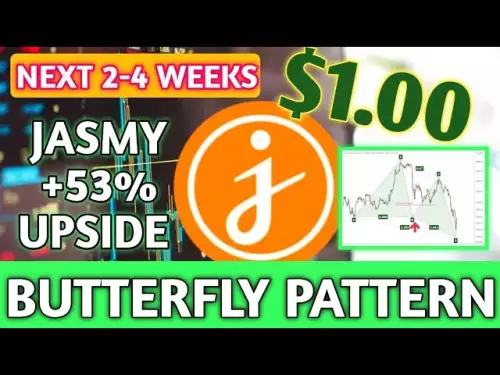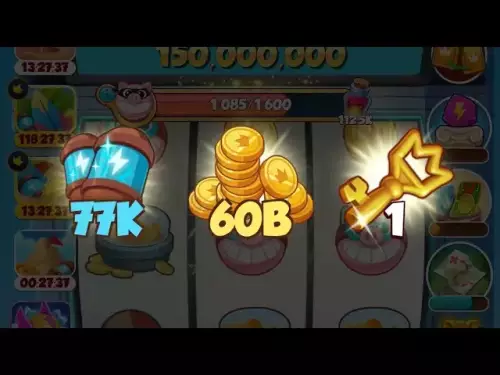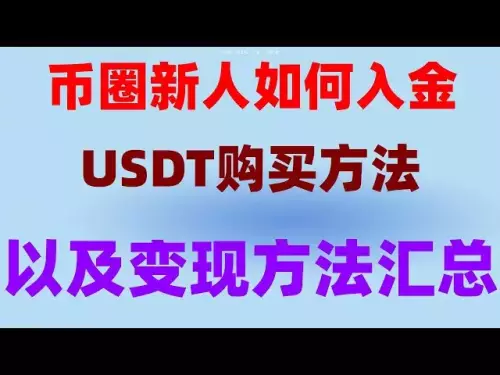-
 Bitcoin
Bitcoin $110200
-2.61% -
 Ethereum
Ethereum $4377
-8.92% -
 XRP
XRP $2.859
-6.00% -
 Tether USDt
Tether USDt $1.000
0.02% -
 BNB
BNB $840.3
-3.99% -
 Solana
Solana $188.1
-8.36% -
 USDC
USDC $0.9999
0.00% -
 TRON
TRON $0.3439
-5.24% -
 Dogecoin
Dogecoin $0.2085
-11.07% -
 Cardano
Cardano $0.8400
-9.29% -
 Chainlink
Chainlink $23.26
-11.27% -
 Hyperliquid
Hyperliquid $43.02
-6.59% -
 Ethena USDe
Ethena USDe $1.001
0.04% -
 Stellar
Stellar $0.3813
-7.26% -
 Sui
Sui $3.336
-10.37% -
 Bitcoin Cash
Bitcoin Cash $540.5
-8.39% -
 Avalanche
Avalanche $23.27
-9.85% -
 Hedera
Hedera $0.2288
-8.60% -
 UNUS SED LEO
UNUS SED LEO $9.572
-0.27% -
 Litecoin
Litecoin $107.8
-9.51% -
 Toncoin
Toncoin $3.115
-6.08% -
 Shiba Inu
Shiba Inu $0.00001195
-8.58% -
 Uniswap
Uniswap $9.635
-12.77% -
 Polkadot
Polkadot $3.733
-10.02% -
 Dai
Dai $1.000
0.01% -
 Cronos
Cronos $0.1550
-2.42% -
 Bitget Token
Bitget Token $4.483
-3.99% -
 Monero
Monero $265.7
-3.26% -
 Aave
Aave $312.1
-10.94% -
 Ethena
Ethena $0.6255
-10.84%
What is the difference in responsiveness between EMA and SMA?
The EMA reacts faster than the SMA by giving more weight to recent prices, making it ideal for short-term traders seeking timely signals.
Aug 06, 2025 at 03:01 pm
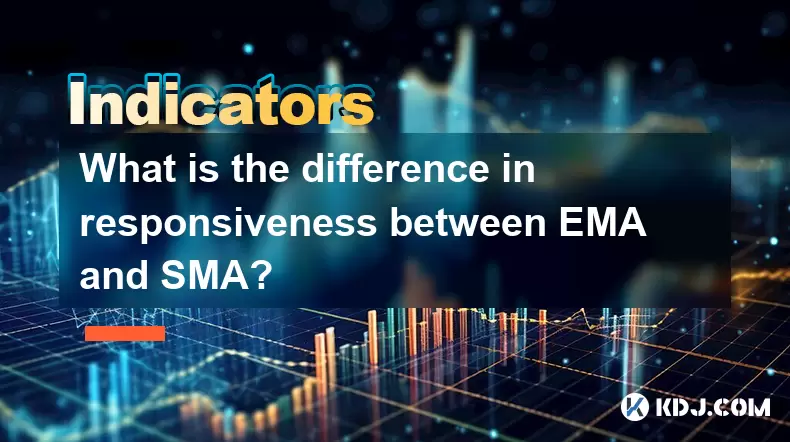
Understanding the Basics of Moving Averages
Moving averages are foundational tools in technical analysis, used to smooth out price data over a specific time period to identify trends. Two of the most commonly used types are the Exponential Moving Average (EMA) and the Simple Moving Average (SMA). While both serve the purpose of filtering out market noise, their calculation methods and responsiveness to price changes differ significantly. The SMA calculates the average of closing prices over a defined number of periods, assigning equal weight to each data point. For instance, a 10-day SMA adds up the closing prices from the last 10 days and divides the sum by 10. This method treats all days equally, whether the price change occurred yesterday or 10 days ago.
How EMA Assigns Weight to Recent Prices
The EMA, in contrast, applies more weight to recent prices, making it more sensitive to new information. This is achieved through a recursive calculation that incorporates the previous EMA value and the current price. The formula for EMA includes a smoothing factor, typically calculated as 2 / (N + 1), where N is the number of periods. For a 10-day EMA, this factor would be 2 / (10 + 1) = 0.1818, meaning approximately 18.18% of the EMA value comes from the current price, and the remaining 81.82% is derived from the previous EMA. This weighting mechanism ensures that the EMA reacts faster to price changes compared to the SMA. As a result, when a sudden price spike or drop occurs, the EMA adjusts more quickly, reflecting the shift in market sentiment sooner.
Visual Comparison of EMA and SMA on Price Charts
When plotted on a price chart, the differences in responsiveness become visually apparent. In a trending market, the EMA will often hug the price action more closely than the SMA. For example, during an uptrend, the EMA will rise faster and stay closer to the current price, while the SMA lags behind due to its equal weighting of older data. Traders can observe this behavior by overlaying both indicators on the same chart. In volatile conditions, the gap between the EMA and SMA widens, highlighting the EMA’s ability to adapt rapidly. This characteristic makes the EMA particularly useful for short-term traders who rely on timely signals to enter or exit positions. The SMA, being smoother, may delay crossover signals, potentially causing missed opportunities or late entries.
Practical Implications for Trading Strategies
The responsiveness of EMA versus SMA has direct implications for trading decisions. Consider a scenario where a trader uses a 50-period moving average to identify trend direction. If the price crosses above the 50-period EMA, the signal is generated earlier than if the same crossover occurred with the SMA. This is because the EMA has already adjusted to the upward momentum, while the SMA is still influenced by older, lower prices. To implement this in a trading platform:
- Navigate to the charting interface of your preferred platform (e.g., TradingView, MetaTrader).
- Select the "Indicators" menu and search for "Moving Average."
- Choose the type: EMA or SMA.
- Set the period to 50.
- Apply the indicator to the chart.
- Observe how each line reacts to price movements, especially during sharp reversals.
This hands-on comparison allows traders to assess which moving average aligns better with their strategy. Day traders often prefer EMAs due to their speed, while long-term investors might favor SMAs for their stability.
Lag Characteristics and Signal Reliability
All moving averages exhibit some degree of lag because they are based on historical data. However, the extent of this lag varies between EMA and SMA. The SMA’s equal weighting introduces a fixed delay—its value is effectively centered around the midpoint of the lookback period. For a 10-day SMA, the average reflects conditions from five days ago. The EMA reduces this lag by emphasizing recent prices, but it does not eliminate it entirely. Despite its faster response, the EMA can also produce more false signals during choppy or sideways markets. This is because its sensitivity may interpret minor fluctuations as trend changes. Traders must balance responsiveness with reliability, often combining EMAs with other indicators like RSI or MACD to confirm signals.
Choosing Between EMA and SMA Based on Market Conditions
Market context plays a crucial role in determining which moving average performs better. In strong trending environments—whether bullish or bearish—the EMA’s quick reaction can provide earlier entry and exit points. For instance, in a fast-moving crypto market like Bitcoin during a breakout, the 20-day EMA might cross above the 50-day EMA (a "golden cross") days before the same crossover appears on the SMA chart. Conversely, in range-bound markets, the SMA’s slower movement can help avoid whipsaws caused by short-term volatility. Traders can test both versions using backtesting tools:
- Open a historical chart of a cryptocurrency (e.g., Ethereum).
- Add both 20-day EMA and 20-day SMA.
- Identify periods of clear trend and consolidation.
- Compare how each indicator behaves during breakouts and pullbacks.
- Record the number of false signals generated by each.
This empirical approach helps determine which moving average suits a particular asset’s behavior.
Frequently Asked Questions
Can I use both EMA and SMA together on the same chart?
Yes, many traders overlay both EMAs and SMAs to compare their behavior. For example, a common setup includes a 9-day EMA and a 21-day SMA to spot divergences in trend signals. When the EMA crosses the SMA, it may indicate a shift in momentum.
Why does the EMA react faster than the SMA?
The EMA uses a weighting multiplier that prioritizes recent prices. This mathematical design allows it to update more dynamically with each new price point, unlike the SMA, which recalculates the entire average from scratch.
Does the period length affect the responsiveness difference between EMA and SMA?
Yes. The shorter the period, the more pronounced the difference. A 5-period EMA will deviate significantly from a 5-period SMA during rapid price moves, while the gap narrows with longer periods like 100 or 200.
Is one moving average inherently better than the other?
Neither is universally superior. The EMA offers speed, beneficial in trending markets. The SMA provides stability, useful in reducing noise. The choice depends on trading style, timeframe, and market volatility.
Disclaimer:info@kdj.com
The information provided is not trading advice. kdj.com does not assume any responsibility for any investments made based on the information provided in this article. Cryptocurrencies are highly volatile and it is highly recommended that you invest with caution after thorough research!
If you believe that the content used on this website infringes your copyright, please contact us immediately (info@kdj.com) and we will delete it promptly.
- Bitcoin Price, Cardano, Layer Brett: What's the Haps?
- 2025-08-26 05:30:13
- Stablecoins, DeFi, and Financial Autonomy: Navigating the Decentralized Revolution
- 2025-08-26 05:05:13
- Mavryk's $MVRK Token: Paving the Way for Real-World Asset Tokenization
- 2025-08-26 03:10:13
- Arctic Pablo Coin: The Meme Coin Presale Poised to Redefine Crypto in 2025?
- 2025-08-26 03:25:13
- ICP Trading Tumbles, PI Plummets, But BlockDAG Sales Soar: A Crypto Contrast in 2024
- 2025-08-26 01:25:13
- Bitcoin, XRP, and Strategy: Navigating the Crypto Landscape Like a New Yorker
- 2025-08-26 01:25:13
Related knowledge
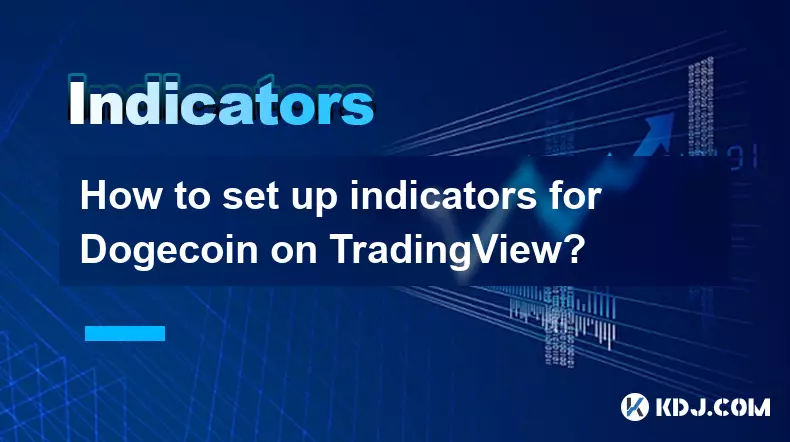
How to set up indicators for Dogecoin on TradingView?
Aug 25,2025 at 04:23pm
Understanding Dogecoin and TradingView1. Dogecoin, initially created as a meme-based cryptocurrency, has evolved into a widely traded digital asset. I...

What does it mean when the +DI and -DI cross frequently in the DMI indicator but the ADX is flattening?
Aug 11,2025 at 03:15am
Understanding the DMI Indicator ComponentsThe Directional Movement Index (DMI) is a technical analysis tool composed of three lines: the +DI (Positive...

What does the sudden appearance of a "dark cloud cover" candlestick pattern during an uptrend indicate?
Aug 13,2025 at 11:35am
Understanding the 'Dark Cloud Cover' Candlestick PatternThe dark cloud cover is a bearish reversal pattern in technical analysis that typically appear...

What does it mean when the moving average, MACD, and RSI all send buy signals simultaneously?
Aug 11,2025 at 01:42pm
Understanding the Convergence of Technical IndicatorsWhen the moving average, MACD, and RSI all generate buy signals at the same time, traders interpr...

What does it mean when both the KDJ indicator and the RSI show overbought signals simultaneously?
Aug 13,2025 at 11:35am
Understanding the KDJ Indicator in Cryptocurrency TradingThe KDJ indicator is a momentum oscillator derived from the Stochastic Oscillator, widely use...

What does it mean when the price is trading above the SAR indicator but the red dots are densely packed?
Aug 09,2025 at 11:49pm
Understanding the SAR Indicator and Its Visual SignalsThe SAR (Parabolic Stop and Reverse) indicator is a technical analysis tool used primarily to de...

How to set up indicators for Dogecoin on TradingView?
Aug 25,2025 at 04:23pm
Understanding Dogecoin and TradingView1. Dogecoin, initially created as a meme-based cryptocurrency, has evolved into a widely traded digital asset. I...

What does it mean when the +DI and -DI cross frequently in the DMI indicator but the ADX is flattening?
Aug 11,2025 at 03:15am
Understanding the DMI Indicator ComponentsThe Directional Movement Index (DMI) is a technical analysis tool composed of three lines: the +DI (Positive...

What does the sudden appearance of a "dark cloud cover" candlestick pattern during an uptrend indicate?
Aug 13,2025 at 11:35am
Understanding the 'Dark Cloud Cover' Candlestick PatternThe dark cloud cover is a bearish reversal pattern in technical analysis that typically appear...

What does it mean when the moving average, MACD, and RSI all send buy signals simultaneously?
Aug 11,2025 at 01:42pm
Understanding the Convergence of Technical IndicatorsWhen the moving average, MACD, and RSI all generate buy signals at the same time, traders interpr...

What does it mean when both the KDJ indicator and the RSI show overbought signals simultaneously?
Aug 13,2025 at 11:35am
Understanding the KDJ Indicator in Cryptocurrency TradingThe KDJ indicator is a momentum oscillator derived from the Stochastic Oscillator, widely use...

What does it mean when the price is trading above the SAR indicator but the red dots are densely packed?
Aug 09,2025 at 11:49pm
Understanding the SAR Indicator and Its Visual SignalsThe SAR (Parabolic Stop and Reverse) indicator is a technical analysis tool used primarily to de...
See all articles





















